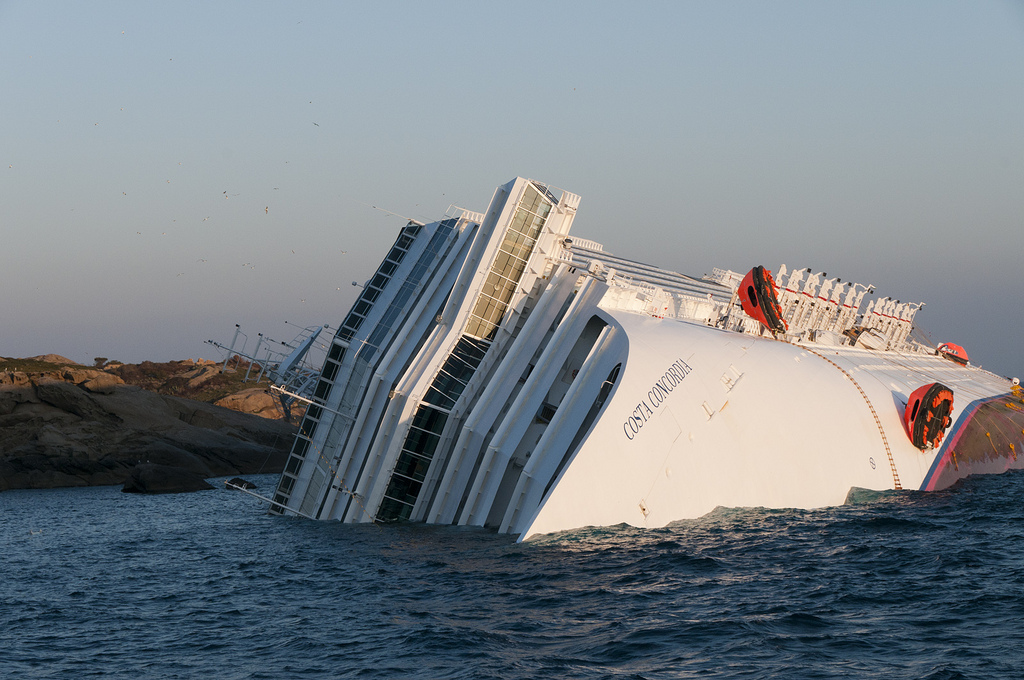Nearly a year after it crashed into a very picturesque rock on the coast of Giglio Island in the Mediterranean, the Costa Concordia cruise ship is still lying on its side in the middle of a marine wildlife preserve. The island’s mayor called the ship “an ecological timebomb,” but while it’s not (currently!) leaking oil into the sea, the Concordia is basically a massive amount of pollution still waiting to happen.
There are only two things to do: Chop it up, sink it, and say sorry, or spend $400 million towing the failed monstrosity away from nature.
The latter it is!
Business Insider calls the plan, “the riskiest, most complicated, and most expensive salvage plan ever undertaken,” and no one is entirely sure it will actually work.
The process consists of stabilizing the ship with massive cables (almost complete); drilling an underwater platform into the sea floor; attaching massive floaties to each side of the ship, tipping it upright, and (hopefully!) towing it away from the protected coastline still mostly intact.
Workers had to take a four-day rock climbing course before beginning the work, which will take months.
The (many) companies undertaking this plan say, “it best fulfills the main objectives of the operation: removal of the wreck in one piece, minimal risk, minimal environmental impact, protection of Giglio’s economy and tourism industry, and maximum safety of the work.”
When the only other option is to sink the ship and walk away, it doesn’t really matter if the salvage plan is serious about preserving the Mediterranean ecosystem or just desperate to salvage the tourist dollars on which Giglio’s economy relies. But just think of all the wonderful things we could do with that $400 million if we weren’t building these big dumb toys and crashing them into islands.




